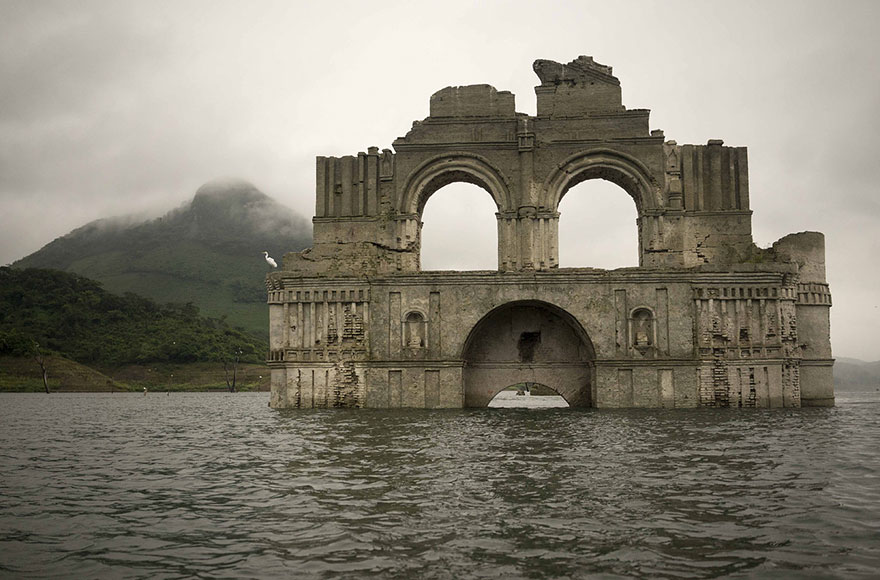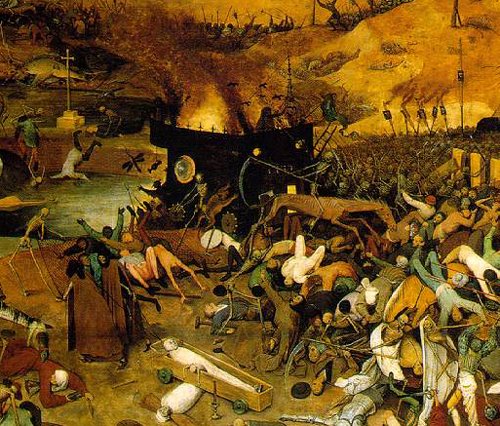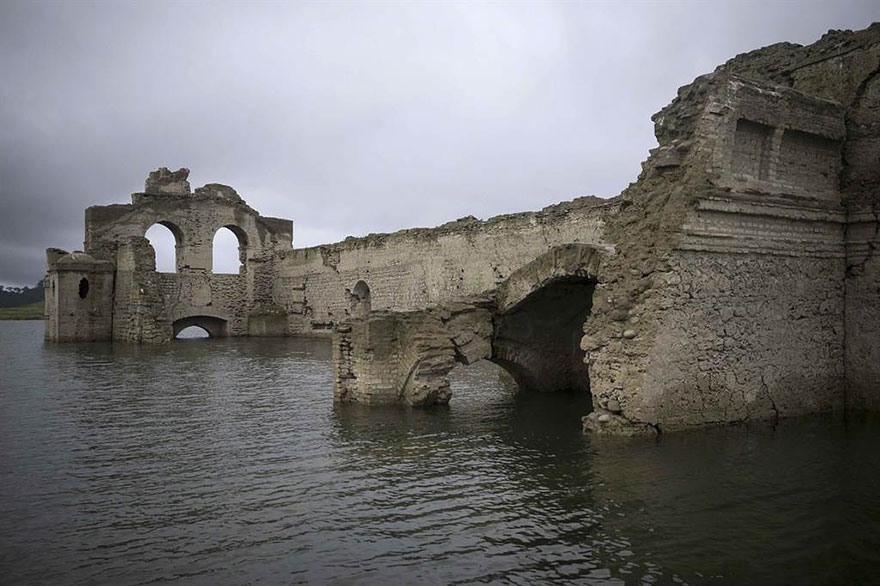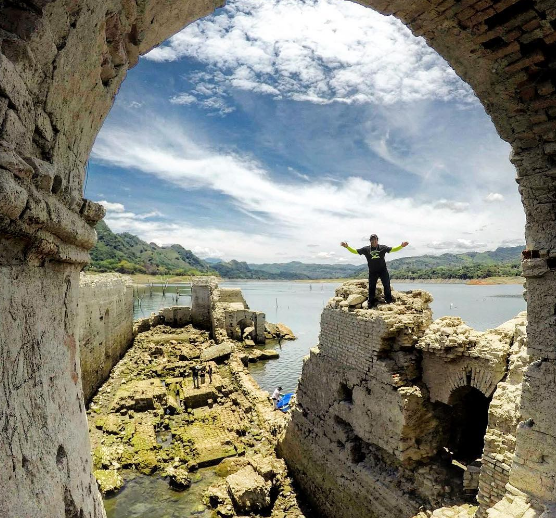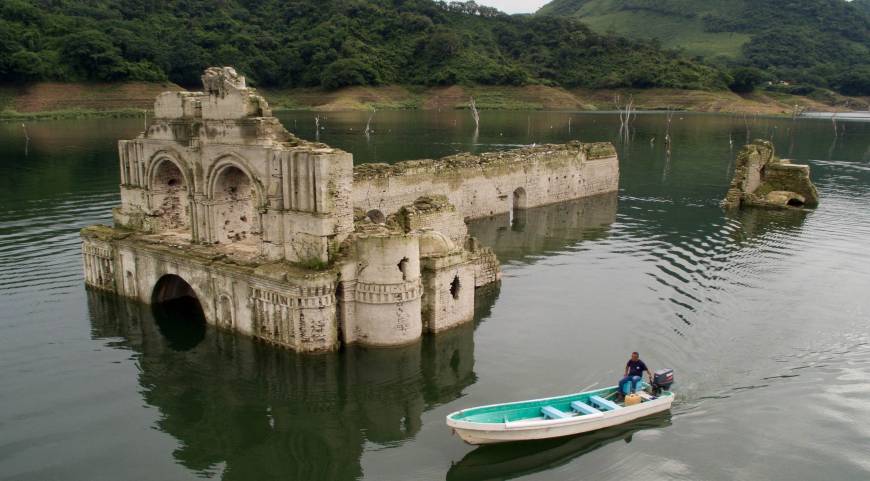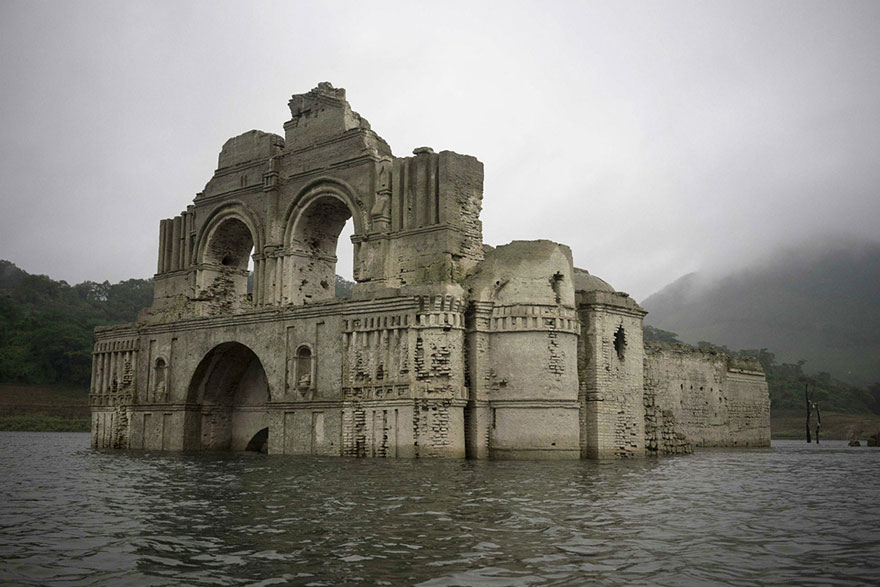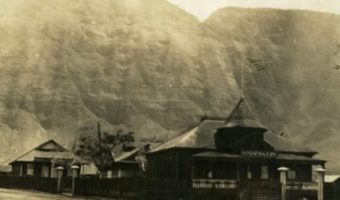450-Year-Old Mexican Church Resurfaces From The Water With Its Brutal History After A Drought
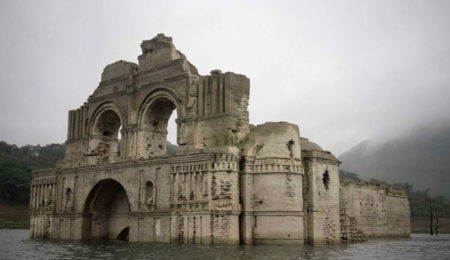
Over the last year-and-a-half, the Grijalva river in Chiapas has been suffering from a drought, causing the Nezahualcoyotl reservoir’s water level to decrease. The drop was rather drastic, totaling up to 25 meters (82 feet). So what happens as a consequence of that, you ask? A 16th-century Mexican church resurfaces from its watery grave and allows people a rare glimpse into its stunning architecture and bloody history.
The church, which is actually called the Temple of Santiago, has an interesting past.
It is said to have been built by a monk fraternity led by Friar Bartolome de la Casas, who arrived in Chiapas around 1564 with Spanish settlers. These monks belonged to The Dominican Order, also known as the Order of Preachers, founded by the Spanish priest Saint Dominic de Guzman in 13th-century France. This is where it gets darker. When a devastating plague gripped the area from 1773 to 1776, the church was completely abandoned.
Carlos Navarete, who worked on a structural report of the church, explains that epidemics were extremely common in late 15 century. Due to the massive influx of traders, explorers and settlers, a whole catalogue of bacteria and viruses were brought into the New World. Malaria, measles, and devastating smallpox breakouts caused deaths in unspeakable numbers. The Temple of Santiago bore witness to this tragic period of time in history, and to be able to look at this magnificent structure is to hold a memorial for those that are long dead and gone.
Speaking to the AP, Mr. Navarete says,
“It was a church built thinking that this could be a great population center, but it never achieved that. It probably never even had a dedicated priest, only receiving visits from those from Tecpatan.”
Tecpatan was a nearby monastery, also founded by The Dominican Order, in 1564. This Roman Catholic Order’s aim was to spread Christianity to south-east Mexico.
Mr. Navarrete has reason to believe that the Santiago and Tecpatan were the work of the same builder. Architectural similarities and the proximity of the time period they were built in were all the clues that were needed. Adding to its importance was the temple’s location: it was on the King’s Highway, a road designed by Spanish conquistadors which was in use until the 20th century.
“At that time we still found the wood from the chorus loft and the roof beams,” he said. “Also a large ossuary of the victims of the plague that depopulated the area.”
But how did this sacred temple drown in the first place? Because of the Benito Juarez Dam. When it was completed in 1996, the church flooded with water and remained that way for decades thereafter, unnoticed. In 2002, however, a severe drought struck this area and caused the Santiago to re-emerge. In fact, people were able to walk around the church because the water levels were so low.
Recalling this incident, local fisherman Leonel Mendoza says in an interview with Associated Press,
“The people celebrated. They came to eat, to hang out, to do business. I sold them fried fish. They did processions around the church.”
This time, the 183-feet-long and 42-feet-wide structure hasn’t risen enough to make walking on the ground level possible, although explorers have been able to climb the church’s walls. Recently, this event has brought boaters and fishermen to the site, who have been giving people trips to let them explore the ruins while the Santiago remains exposed.
The church is also called the Temple of Temple of Quechula, and is submerged under nearly 100 feet of water when the reservoir is not experiencing drought.
Its walls reach a staggering 32 feet, with the bell tower rising to 48 feet above the ground, according to a report from The Associated Press. On a sadder note, local guides opine that the building is deteriorating due to its age and being immersed in the water for so long.
18 Interesting and Fun Facts about Women That Explain A Lot!
28 Legen-DARY Facts about “How I Met Your Mother” that You Never Knew!














